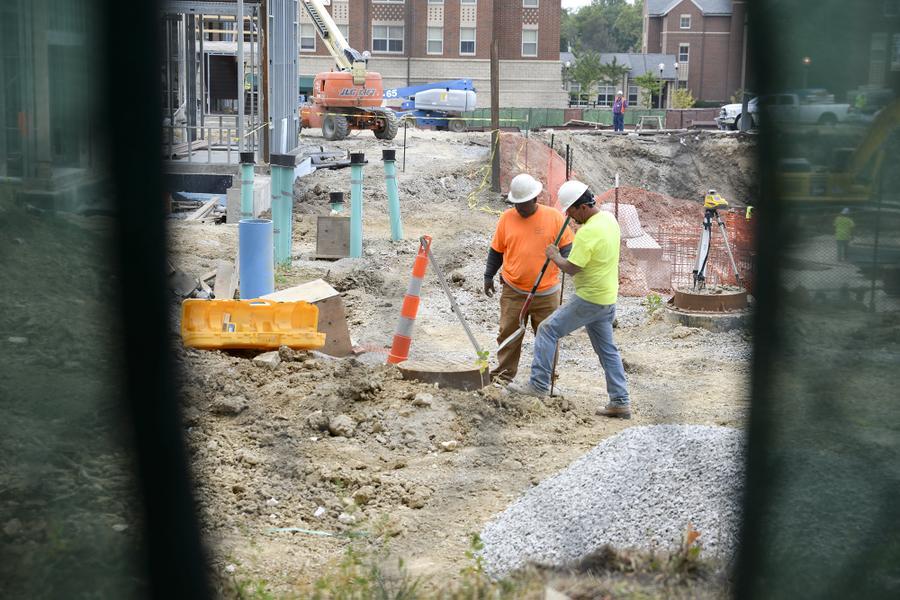
Set to open next fall, Building One is finally getting a name — George C. Brooks Hall. The UM System Board of Curators voted ‘yes’ at their meeting Friday.
Building One is south of the site of the former Jones Hall, demolished in January 2015. It will be the third building on campus named after a black man, according to [previous research by The Maneater](https://www.themaneater.com/stories/2015/10/6/rha-considers-diversity-naming-new-residence-halls/).
George C. Brooks directed the Financial Aid office in its infancy, developed MU’s work-study program, and was one of the first African-American administrators. For his efforts in the Financial Aid office, a scholarship for underrepresented students was named after him. Each year, 25 students receive the $7,500 award, which comes with an out-of-state tuition waiver.
According to the meeting documents, naming the building after Brooks would recognize “his efforts to create opportunities for a diverse range of students in a wide range of educational and cocurricular activities, and in particular, access to higher education for many first-generation college students.”
Residential Life Director Frankie Minor said the name is part of the department’s mission to create more inclusive communities.
The name was recommended by the Residence Halls Association and given informal approval by administrators. Minor said it received good support along the way. The Board of Curators have the final say on the name.
The naming requirements in the UM System Collected Rules and Regulations say that a building can be named after someone who served the institution and the state of Missouri.
“I believe Mr. Brooks is deserving of that honor,” Minor said.
A Columbia native, Brooks attended Douglass High School, according to his biography in the meeting documents. He received his undergraduate education at Lincoln University with the help of the GI Bill. He eventually changed his career plans to stay in town and teach science classes at Douglass.
He also coached several sports, a position in which he pushed racial boundaries by arranging “football games between white and black high schools,” according to meeting documents. He also advocated for the integration of umpires.
Outside of the school system, Brooks was a local civil rights activist. He led the effort to desegregate Columbia restaurants and “fought for a city ordinance ending discrimination in housing,” per the biography.
Minor referred to Brooks as a “trendsetter.” Brooks was one of the first African-American senior staff members at MU, and also helped to provide access to education.
“He soon earned a reputation for encouraging students individually as they sorted their way through financial difficulties,” according to the meeting documents.